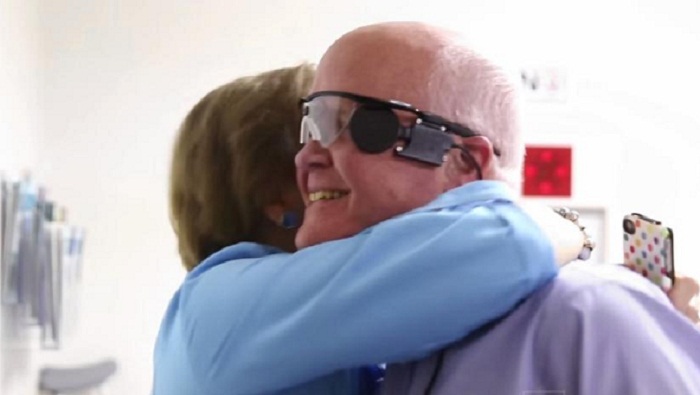
Larry Hester from North Carolina was one of the first patients to receive the new technology, which gave him a chance to see again, after 33 years of blindness.
Larry Hester lost his sight in his 30s when he was diagnosed with a rare genetic disease called retinitis pigmentosa. It involves degenerative retinal changes, which lead to the loss of peripheral vision and the so-called night blindness. The disease is hereditary in 60% of cases. There are 1,5 million people worldwide who suffer from retinitis pigmentosa.
Hester is the seventh patient to receive a bionic eye implant Argus II Retinal Prosthesis Device, developed by Second Sight Medical Products, together with North Carolina’s Duke University Eye Center.
The bionic vision technology is based on the transmission of signals to the nerves of the blind person’s retina. A tiny camera embedded in a pair of glasses detects the light and transmits it to a miniature computer, which converts it into electrical signals corresponding to the synthesized image. A wireless implant consisting of 60 electrodes stimulates the optic nerve directly and thus transmits the signals to the brain.
However, bionic vision is more limited – in fact, a person can only distinguish between the light and the dark. Yet, the developers promise to expand the capabilities of the new device in the future.
“It’s a fairly limited device, but it’s an amazing leap forward,” says retinal expert Dr. Colin McCannel. “It’s not the vision you or I am used to. But for someone who has been in complete darkness, it must be amazing to see again. I think it’s absolutely phenomenal.”
Despite the fact that the device is not yet able to produce complex visual patterns and allows Larry Hester only to see flashes of light and distinguish some objects from others, it is a true miracle for him and his family. “It’s so basic,” he says in the video. “The light is so basic and probably wouldn’t have significance to anybody else. But to me, it’s meaning I can see light. And we can go from here.”
This website uses cookies.